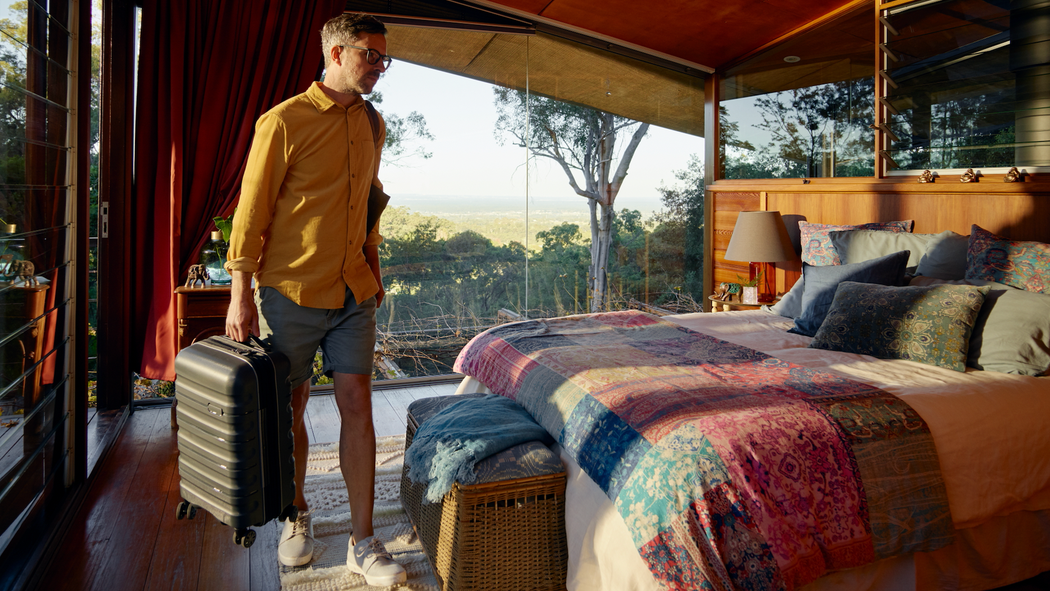Important safety guidelines for Hosts
Being informed about safety issues allows you to plan ahead and welcome guests as comfortably as possible. We’ve compiled a few tips to help you follow common safety guidelines. Be sure to familiarize yourself with and follow any laws, rules, and regulations specific to your region.
Swimming precautions
Pools are a great draw for guests, but can also present a safety risk. The exact requirements for offering a property that includes a pool vary by area, but Safe Kids Worldwide urges you to do the following to help keep you and your guests safe.
Provide safety equipment:
- Install a pool fence. It should be at least 4 feet high with a self-closing and self-latching gate. The fence should surround all sides of the pool without anything else, like the house, serving as part of the fence.
- Install alarms on all windows and doors leading to the pool area.
- Install anti-entrapment drain covers and safety release systems. These can help protect against the potential hazard of becoming stuck.
- Provide rescue equipment. These include shepherd’s crooks, reaching poles, ring buoys, and first aid kits. Consider adding a landline phone in the pool area.
Perform your own routine inspections:
- Measure water clarity and chemical balance. This should be done on a set schedule, and before guests check in.
- Make sure safety equipment is present. This should be done before each check-in.
- Secure access to the pool area. This includes doggie doors and other access points that a small child could slip through or climb over.
Help educate guests:
- Update your listing. Clearly indicate in your listing description which pool safety equipment and features you do and don’t provide. For example, “We provide life vests in child and adult sizes. The pool does not include a four-sided isolation fence, so added supervision is required.”
- Ask guests to review your house manual. It should include information about the safety features you provide, such as the drain cover, alarms, and pool fence or gate. Be clear that swimming aids and water toys such as water wings and pool noodles do not prevent drowning.
- Post safety information. Provide a brochure or signage in view of the pool that includes all safety recommendations, warnings, and emergency contacts. Remind guests to check the pool first if a child goes missing. Include CPR instructions, the Safe Kids Pool Safety Checklist, and the listing address.
- Remind guests to practice touch supervision. This involves being within reach of weak or non-swimmers at all times. Include this in your house manual and post it in view of the pool.
- Provide a Water Watcher Card with instructions on use. A Water Watcher is a responsible adult who agrees to supervise children in the water without any distractions.
Elevator safety
Elevators can add convenience and increase accessibility at your listing, but they can also present a safety risk. Check with local authorities for guidance on elevator safety.
The Consumer Product Safety Commission in the US urges consumers to:
- Make sure the gap between doors is no more than 4 inches deep. If you’re unsure or otherwise concerned about the safety of the elevator, lock the elevator in an unusable position, or lock all access doors to the elevator. Elevator installers should never allow any gap deeper than 4 inches to exist in an elevator entryway.
- Have a qualified elevator inspector examine their home elevator. They should check for any dangerous gaps and other potential safety hazards and inspect the latest ASME A17.1, Safety Code for Elevators and Escalators.
- Obtain safety devices. Gaps can be made safer by placing space guards on the back of the exterior door or installing an electronic monitoring device that deactivates the elevator when a child is detected in the gap. Contact your elevator manufacturer or an elevator installer to obtain safety devices to address this hazard.
By listing your space on Airbnb, you certify that you’re following applicable laws and regulations.
Safety devices
We strongly urge all Hosts to install smoke and carbon monoxide alarms, test them regularly, and make sure listing descriptions are up to date.
- Check local regulations. You may be required to have more than one working smoke and carbon monoxide alarm installed in your listing. Some cities require one in every room.
- Request an alarm. Eligible Hosts with an active listing can get a self-contained, battery-powered combination smoke and carbon monoxide alarm at no cost. Terms and conditions apply.
- Update your listing. Guests can filter their searches to include only spaces that have carbon monoxide alarms. Add details about the alarms you’ve installed to the safety devices section under guest safety.
Information contained in this article may have changed since publication.
